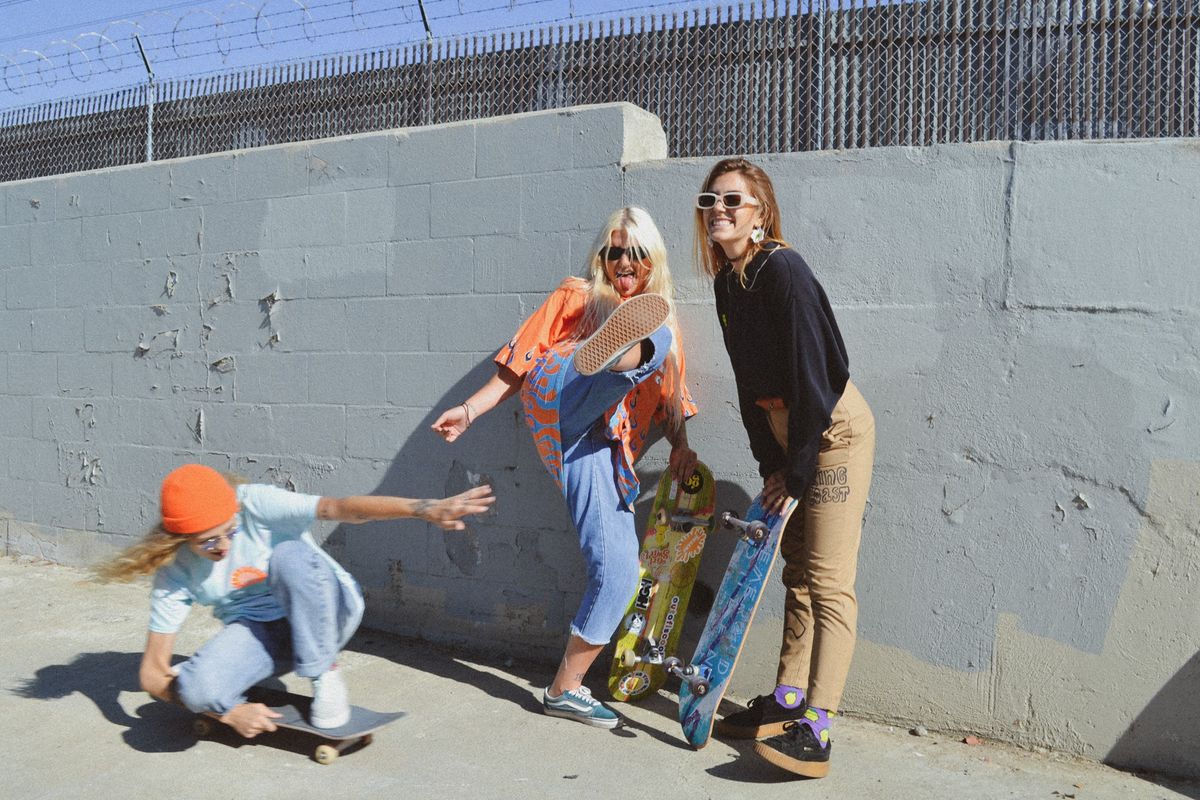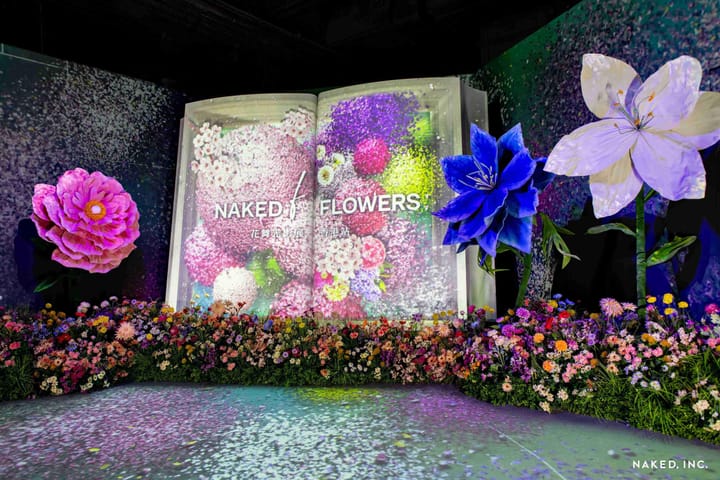The revolt against fast fashion – Jay Cardoza’s King Coast

A few minutes every morning is all you need.
Stay up to date on the world's Headlines and Human Stories. It's fun, it's factual, it's fluff-free.
An increasing demand for sustainable, individual style sparked the revolt against fast fashion, but none of this was at the front of Jay Cardoza’s mind when they began their indie clothing brand King Coast in 2017.
“The way it started was super organic,” says Cardoza. “It was just a way to, like, quit my restaurant job because I was just so over it. I was a student at the time, but I still needed money for rent, and I’m way too creative to be working as a cashier. And that’s what I was doing at the time … My dad is an entrepreneur, and he’s always pushed me to start my own thing, which is really cool to have that in a parent.
“So one day I was on eBay, and I saw this box of retro hats. You couldn’t really see much of what was in it, but you could see a couple hats. I think it was like a hundred bucks for a bunch of hats, so I kind of just bought the box. I bought some iron-on patches, and I just made some hats with my iron. And then I just started an Instagram for it and posted them, and I don’t really know how people found me, but everything sold out right away.
“Everything was one of a kind, so people really liked it … I quit my job and started King Coast full-time. Eventually I got a vinyl cutter, so I could make my own designs and stuff like that.”
King Coast and genderless clothing
A slow fashion clothing brand based in San Diego’s Ocean Beach, King Coast upcycles and repurposes unwanted pieces for the community. They found most of their followers through Cardoza’s personal Instagram, an account littered with the nomadic beauty of queer SoCal life in a van. King Coast consumers often identify as nonbinary or LGBTQ, and they embrace a unique, androgynous style.
“I’m definitely trying to get anybody and everybody, because everything is unisex,” says Cardoza. “Anybody can wear it. I try to push androgynous and unisex clothing, because a lot of people still feel like they have to fit into the box of their gender and wear gendered clothes. I really want to make [unisex/genderless clothing] a worldwide thing and open everyone’s mind. Like, this is a piece of fabric. It isn’t for men or women. Someone just created that and brainwashed us all.”
Genderless clothing is only a vague descriptor when it comes to Cardoza’s style and their brand. Inspired by “Lords of Dogtown,” a 2005 American film about a group of Santa Monica skateboarders, Cardoza made the move to California.
“I watched that movie and was like, yeah, this is me,” says Cardoza. “I grew up in a very preppy, not creative, very straight community. When I was a kid, I was a tomboy. When I got older, I was dressing more feminine, but when I moved out here, I learned that everybody just does their thing and that’s when I really found my style.”
Their brand and their own style borrows from the grungy surf and skate culture in Southern California as well as the 90s hip-hop and rap scene. Baggy clothes, chunky, colorful logos reminiscent of the birth of street art and individualism reigns over Cardoza’s artistic choices for King Coast.
What is fast fashion and how does it affect the environment?
Fast fashion describes a business model that profits off of rapidly mass-producing trendy and cheap clothes – often fashions made popular on the catwalk or by celebrities. It’s high fashion for the general population. Fast fashion marketing urges consumers to buy their products before they are gone, as many garments will stay on the rack for only two weeks.
At first glance, providing low-cost trendy clothes seems like a step forward in accessibility. After all, doesn’t everyone deserve to dress like a star? Brands like Zara, Forever21 and H&M will dress you, an “ordinary” person, like a Kardashian. While you could argue that fashion trends mute originality, the main qualm with fast fashion is its negative environmental impact.
The mentality behind seasonal trends renders much of our clothing single-use. You may not even wear the pair of jeans an advertisement persuaded you to purchase. The supply and demand for textiles has more than quadruped in the last 50 years, which means we have produced and continue to produce a vast amount of waste. Aside from waste, textile production requires a significant amount of water, and textile dyeing is the second biggest culprit behind the world’s water pollution.
While the rise of thrift stores has helped consumers rebel against fast fashion and make their own stylistic choices, thrift stores still have unsustainable practices. Only a small percentage of the clothes you sell, trade or donate to thrift stores will appear on the squeaky racks or in the plastic bins. The rest often becomes waste.
“I’m just trying to be waste-free,” says Cardoza. “I don’t buy anything unless it’s upcycled or dead stock or seconds. As I learned about fast fashion … I realized I want to educate people about this and get them not just to start buying sustainably and upcycling but to start making stuff out of the clothes they no longer want. I want to not even buy anything from thrift stores. I want to talk to them and say, ‘hey, can I go through your pile that you’re about to throw out?’ A lot of stuff they don’t sell, they never put it up on the racks. Or if it doesn’t sell, they will just throw it out, so I want to go through that stuff. Because that’s really what I’m trying to do. Save the stuff that’s going in the trash. Because I know people will buy the stuff that’s going on the racks.”
Cardoza sources most of the clothing and scraps they use to create King Coast clothing from swap meets and donations. Whatever they can repurpose, they do, and the rest they donate to a local organization called Sharia’s Closet, which puts together gift baskets for the houseless population and kids in the foster system.
“It’s really cool to be involved in this because we get to see these clothes going back to the community,” says Cardoza. “I’m doing everything untraditionally. And me and my girlfriend do everything ourselves, so it goes at a slower pace. But that’s the point. Trying to show people that slow fashion is better than fast fashion.”
Is your business doing something cool that you want to show off? Get in touch at hello@themilsource.com




Comments ()